If you want to know how to start a blog, you’ve come to the right place.
Bloggers were some of the first online businesses, and blogging is still a viable business model today. It’s a great way to share your voice, connect with like-minded readers, and make some money. The most successful bloggers can even blog as their full-time job.
Starting a blog may seem like a big task. But we’ve created this step-by-step guide with all the knowledge and tools you need to start your blog. You’ll learn how to build your blog website, create and promote high-quality blog content, and make money from your blog.
Sounds good? Let’s get started.
- What is a Blog?
- Things to Consider Before You Start a Blog
- How to Start a Blog Website
- How to Create a Blog Content Calendar
- How to Promote Your Blog (4 Free and Easy Ways)
- How to Make Money Blogging
- Frequently Asked Questions (FAQs): How to Start a Blog
- Next Steps: Start Blogging and Making Money
What is a Blog?
A blog is a website that regularly posts content about a specific topic. The word blog is short for “web log” and was originally similar to an online diary.
Over time, writers found all kinds of different blog niches, from cooking to home decorating to tech. For example, Syed Balkhi started the blog WPBeginner to provide easy WordPress tutorials that anyone could use to create a WordPress site. It’s now the largest free WordPress resource site in the industry.
Eventually, bloggers also found ways to use their content to make money online from blogging. You can do this through affiliate marketing, advertising, paid subscriptions, and many other strategies.
Blogging can be a fulfilling creative outlet and profitable business model. While most bloggers won’t see huge results immediately, if you work hard and publish good content consistently, you can create a successful blog.
Things to Consider Before You Start a Blog
We wanted to give you some important tips before you spend too much time or money starting a blog. It’s totally fine if you just want to blog as a hobby and see what happens. If you’re really set on making money with your blog, however, we recommend doing a bit of planning before you hump into writing your first blog post.
1. Choose a Monetization Strategy
Why are we starting off with monetization? Because if you’re going to blog for money, you need to treat the blog like a business. And every business plan needs a way to make money.
The main ways that bloggers make money include:
- Affiliate marketing: You earn money when readers click on affiliate links you’ve shared in your blog posts.
- Advertising: You earn money when readers click on ads in your content.
- Sponsored content: Brands pay you to create content featuring their products.
- Paid content: You sell access to your content directly to readers through a paywall or membership site.
- Digital or physical products: Your content promotes your own digital products or physical merchandise.
All of these strategies rely on getting more visitors to your blog. The more visitors you get, the more people will click on your affiliate links or ads. Brands typically pay more for sponsored content that a large audience will see. If you’re monetizing your own content with a membership site or products, the more visitors you have, the more people will pay for a membership or your product.
The way to get visitors is to create excellent content, which brings us to our next thing to consider.
2. Pick a Niche
There’s a ton of content on the Internet, and it can be hard to stand out. One way to do this is to choose a niche.
Instead of trying to create content that everyone sort of wants to read, focus on creating content that a certain group really cares about. Make sure your niche is wide enough that a significant number of people are searching for it, but deep enough that you can come up with a lot of specific blog topics.
When choosing a niche, keep your monetization strategy in mind. If you’re planning to promote affiliate links, think about the products your audience would be most interested in buying. If you want to sell subscriptions or digital products, does your target audience have the resources to buy this content?
Here are some ways to narrow your niche:
- Choose a specific location, like Chicago
- Pick a segment within a larger category, such as plus-size work fashion instead of just plus-size fashion
- Use a unique style or voice
- Go in-depth and improve your blog quality with custom graphics or other supporting materials
3. Create Some Content
Finally, start writing a few blog posts for practice. Make sure your niche is something you actually want to write about consistently. You don’t want to go to all the effort of building a blog website, post 3 articles, and then realize you’re bored and have already run out of things to write about.
Test-drive your monetization strategy too. Look for affiliate products to add, or ad networks that you can join when you first start out. You won’t get any actual revenue until you start publishing regularly, but you’ll at least have a game plan to start with.
Once you’ve done some planning, let’s go over the technical steps for starting a blog.
How to Start a Blog Website
Starting a blog can be quite easy if you have the right tools to use and steps to follow. Here’s what you need to get started:
- Domain name
- Web hosting account
- 1 hour of time
That’s right! You can have the technical side of your blog up and running in less than an hour. We’ll show you how.
Step 1: Pick a Blog Platform and Blog Name
Choosing a blog platform is a pretty important decision. The platform, or content management system, you choose will decide what tools you can use to build and promote your blog. You don’t want to limit your blog’s potential by choosing an “easy” platform that can’t grow with you.
For almost all users, we recommend using WordPress.org, also known as self-hosted WordPress. WordPress is open source, which means anyone can use and edit it as they want. It’s also free, which is great for new bloggers.
There’s also a paid option at WordPress.com, but that gives you far fewer options for customizing and making money from your blog. So let’s stick with the free version from WordPress.org.
Why is WordPress free? Well, you have to set it up yourself. This means you need your own domain name and web hosting package.
A domain name is like your blog’s online address. It’s what people type in to find your website. Think optinmonster.com or amazon.com.
To come up with a good domain name, brainstorm what your blog will be about. Many personal blogs use a name that combines something about them and their topic, such as Pioneer Woman or Mandarin Mama.
Other bloggers simply use their own name, like Nia Shanks. You may need to do more work to establish your brand identity, but you also get more flexibility to write about different types of content as your blog evolves.
You can use a blog name generator to help you brainstorm and check what’s available.
Once you have a domain name picked out, you need web hosting. Web hosting is like the digital land that your website is built on. Your website files will be stored in your blog hosting account.
Bluehost is an amazing hosting company where you can purchase both your custom domain name and a web hosting package. There are also a variety of other managed WordPress hosting companies you can choose from.
Here’s how to get your free domain name and hosting package from Bluehost.
First, go to Bluehost and click on the green Get Started Now button.
Next, choose your hosting plan. The Basic or Plus plans are suitable for most new bloggers.
After that, you can enter the domain name for your blog.
Once you finish those steps, you’ll create your account and enter payment information. We recommend choosing the 12-month plan to give you the best value. Signing up for the first year also gives you plenty of time to work on your blog. Remember, it takes time to get a blog established and start making money. So don’t put too much pressure on yourself to try and see a big return very quickly.
Step 2: Install WordPress
When you sign up for Bluehost using our link, they will automatically install WordPress for you. You will then be able to log into your WordPress dashboard from your Bluehost account.
Other hosting providers will have their own instructions for how to install WordPress, so be sure to check out the ones for your web host.
Once you have WordPress set up, you can customize your blog design and start creating content.
Step 3: Select Your WordPress Blog Theme
WordPress themes control what your blog looks like. Your blog will have a default theme when you first install it, but it will not be very attractive to most people.
Fortunately, there are plenty of free WordPress themes available through the WordPress dashboard. Simply click on Appearance » Themes and search through the themes directory.
You can preview a theme before you install it to see how it really looks on your website.
Keep in mind that the preview may not look exactly like the image in the theme directory. That’s because you can customize your theme later. Look for overall design, colors, fonts, and other important elements.
Another option is to buy a premium theme through sites like ThemeForest or CodeCanyon. Choose themes that are highly rated and have been updated recently.
Whether you choose a free or paid theme, our best tip is choosing a simple design. This gives your users the best experience while keeping things easy for you to use.
When you find a theme you like, simply click the Install button. After the theme is installed, the button will say Activate. Click Activate to add the theme to your blog.
After you’ve installed your new theme, you can customize it by clicking Appearance » Customize. There will be built-in options for customization that you can use to tweak your blog design.
For even more design control, you can use a WordPress page builder like SeedProd or Elementor. These plugins let you build custom headers, footers, sidebars, and even full themes, without writing any code at all. You get more design control than you would with other website builders like Wix or Squarespace. There are plenty of templates you can customize to fit your brand, or you can start completely from scratch.
Once you’ve selected your WordPress theme, you are ready to add some plugins.
Step 4: Add Plugins and Customizations
WordPress plugins are like apps that add new functionality to your WordPress site. You can use plugins to add important website elements like a contact page, image galleries, email signup forms, or even an eCommerce store.
There are tons of WordPress plugins available for free in the plugin directory. And there are plenty of paid plugins with more powerful features. Here are the plugins we recommend as you start building your blog:
1. WPForms Lite
Surprisingly, WordPress doesn’t come with a contact form built in. So you need to use a WordPress form builder plugin to add a contact form to your blog.
Our top pick is WPForms Lite. It’s the free version of the #1 contact form plugin, WPForms. With WPForms Lite, you can add a contact form anywhere on your site using the WordPress block editor.
Check out our easy WordPress contact form tutorial.
2. MonsterInsights
The next plugin we recommend is MonsterInsights. MonsterInsights is the easiest way to connect your WordPress site to Google Analytics.
After you sign up for a free Google Analytics account, install the MonsterInsights plugin for free. Then you can add the Google Analytics tracking code to your blog and start monitoring your blog traffic.
Learn how to add Google Analytics to your site in under 5 minutes.
3. All in One SEO (AIOSEO)
Search engine optimization (SEO) helps users find your blog through search engines like Google or Bing. To get your traffic, you must optimize your blog for SEO from the beginning if possible.
All in One SEO plugin makes it easy to get started. It’s a complete WordPress SEO plugin that will help you set up a WordPress sitemap, use proper keywords in your post titles, content, and meta descriptions, and so much more.
4. Duplicator
To protect your website from going down, you need to have regular backups of your content. Duplicator creates regular backups of your site in case anything goes wrong. It’s free and lets you bundle all of your blog’s plugins, themes, content, database and WordPress files into a single zip file. You can download this file as a backup or use it to migrate or duplicate your website.
5. Sucuri Security
Sucuri Security is a free scanner plugin for WordPress. It looks for security issues in order to keep your blog secure.
6. PushEngage
PushEngage is the easiest way to add web push notifications to your blog. This can help you connect with visitors after they leave your blog and bring them back for more great content. Learn how to add push notifications to boost traffic in WordPress.
7. OptinMonster
Finally, we recommend using OptinMonster to grow your blog email list. Your email list will be a valuable resource throughout your blogging journey. So it makes sense to invest in growing your email list from the beginning.
By offering a wide range of attractive and customizable opt-in forms, pop-ups, and slide-ins, OptinMonster enables bloggers to capture their visitors’ attention and encourage them to subscribe to their email list.
After you have your basic plugins set up, you can start writing your blog!
Step 5: Publish a Blog Post
To publish your first blog post, click on Posts » Add New in your WordPress dashboard.
You’ll be taken to the block editor screen where you can write your blog post. The WordPress block editor lets you create layouts for your post featuring text, headlines, images, videos, and other elements.
You can add categories and tags to your post. This helps people find their way around your blog. Once you have more content published, make sure to link to related posts. Doing this can improve your SEO performance.
Once you’re done, click the Publish button in the top right corner. This makes your post publicly visible to the world. You can also save it as a draft or schedule it to publish later.
And there you have published a blog for the first time! Simply repeat step 5 to publish new blog posts consistently, and you can be on your way to earning money from your blog.
Keep reading to learn how to create a content calendar to publish consistently on your blog.
How to Create a Blog Content Calendar
One of the keys to a successful blog is consistency. If you only publish new content a few times a year, readers won’t know what to expect. That’s why we always suggest that new bloggers create a content calendar once they’ve got their blog page set up.
Here are 3 simple steps to creating a blogging calendar:
Step 1: Brainstorm
First, think about the experiences you’ve had related to your niche. Maybe you’re writing a vegetarian recipe blog. Start by listing your own favorite recipes. Each of those can be its own blog post. You can also create showcase posts linking to multiple individual posts.
Next, think about what your target audience cares about. What questions do they have related to your niche? What problems are they facing that you have ways to solve? Write all of these down as possible blog post ideas.
Finally, go back through your current list. Look for broad topics that can be broken down into smaller, specific topics. For example, “parenting content” is too general. You could break down topics by ages of children, and then into specific areas like play, learning, feeding, and others.
If you need more inspiration, here are some blog post ideas to help you get started.
Step 2: Research
In addition to brainstorming, you need to do some research.
Look for patterns in how your audience engages with your content. Which posts get the most likes, comments, and shares? Look for topics and formats that are the most popular and get the most engagement.
More insights are available in your website traffic. Look in MonsterInsights or Google Analytics to see which posts get the most visits. This can give you a clue about what type of content your readers want to see. Other metrics to check include pages with the lowest bounce rate or highest conversion rate. Make a note of these popular posts and related topics you can write about.
Another good source of ideas is keyword research. You can use Google Search Console to see what keywords are driving traffic to your site. If you plug these into a keyword research tool like SEMRush or Ahrefs, you can find related keywords and topics that people are searching for related to your content. Write down these ideas and use them for inspiration.
Step 3: Plan
Once you have your list of ideas, decide how often you’re going to publish. Generally speaking, the more often you publish, the more traffic you’ll get. But you also need to be realistic about how frequently you can create high-quality content.
Think through how long it takes to create a post. This includes writing, sourcing graphics, and creating promotional content for social media or your email newsletter.
Then, consider how much time you have per week to dedicate to your blog. Again, be realistic and honest in your expectations. When you first start, you’ll probably be working on your blog on the side.
Based on how long it takes to create a post and how much time you have available, decide how many posts you’ll publish per week.
Set aside time on your calendar for working on your blog. Go through your list of ideas and start assigning posts to specific dates.
Since you’re going to all the hard work of creating content, let’s make sure that your readers can see it. In the next section, you’ll learn easy and low-cost ways to promote your blog.
How to Promote Your Blog (4 Free and Easy Ways)
There are lots of ways to promote your website for free. We’ve pulled out the top 4 for this guide, so you can get more traffic to your blog right away.
1. Search Engine Optimization (SEO)
Search engine optimization is the process of making your blog content more visible in search engine results. The first page of search results gets way more clicks than other pages. If you can get on that first page, you can drive a lot of potential customers to your website without any expense at all.
Some SEO best practices include:
- Auditing your website on a regular basis to see how your blog is performing
- Monitoring your keyword rankings
- Creating high-quality content using common keywords related to your niche
- Optimizing your on-page SEO
- Building links to your website over time
It’s also important to have the right SEO tools for your blog, such as All in One SEO or Yoast SEO.
2. Email Marketing
Email marketing is one of the best ways to promote your blog. With email marketing, you can directly contact your audience whenever you want. You can also set up email automations that drive traffic and generate leads around the clock.
You will need an email service provider (ESP) to host your email list and send out newsletters. We also recommend a list-building tool like OptinMonster to maximize your subscribers. Remember, the more email subscribers you have, the more opportunities you have to send traffic to your blog, share affiliate links, and sell your digital products.
Here are the basics of creating an effective email marketing strategy:
- Give readers a reason to subscribe, such as a free download lead magnet
- Send out great content that your subscribers actually care about
- Track your email metrics to see how your marketing efforts perform over time
3. Guest Blogging
Guest blogging is when you create content for other people’s blogs. You can also appear on podcasts related to your niche. Guest posting and podcast guesting has 2 major benefits for your blog.
One, you get access to the audience and authority of the other blogger or podcast host. They’ve already created their own content, and their audience will already be interested in your post. Because the audience already trusts the creator, some of that trust will rub off on your post as well.
Two, you can use guest blogging to build backlinks to your own blog. When you create a guest post, most hosting bloggers or podcasters will include a link to your blog. You can also promote your guest post to your own email list and marketing channels.
4. Social Media
Social media sites like Facebook, LinkedIn, and TikTok are an easy, free way to promote your blog. For each blog post you write, you can spin off a variety of social media content. Since social media posts tend to be much shorter than full blogs, each blog post can generate several posts or videos for social media. Plus, since social media tends to have a shorter “lifespan” than an evergreen blog post, you can repurpose content instead of always creating new posts.
You can also use your blog to get more social media subscribers. Learn how to add a custom Instagram feed or custom Twitter feed to boost engagement.
How to Make Money Blogging
We’ve already gone over the basics of monetizing your blog, and now we’d like to give you more detailed strategies for making money from your blog.
Blogging is sometimes referred to as a source of passive income. The reality is that it takes work to create content and build an audience. But that work can continue to pay off long after you’ve hit Publish. Here are 5 ways you can make money from blogging.
1. Affiliate Marketing
Affiliate marketing is a way for bloggers to earn money by promoting products or services on their websites. It works like this:
First, you sign up for a brand’s affiliate program. The company is usually an online retailer, like Amazon, but you can also become an affiliate for digital products or online programs. Once approved, you’ll receive a unique link or code to share with your readers.
Next, you’ll write a blog post or create content related to the products you want to promote. You can talk about the benefits of the products or how you’ve personally used them. Then, you include your unique affiliate link in the post.
When readers click on the affiliate link and make a purchase, you’ll earn a commission. The commission is a percentage of the sale or a fixed amount set by the company.
Bloggers can use various affiliate marketing tips to maximize earnings. You can write product reviews, create gift guides, or offer special discounts to your readers. You can also place banner ads or use widgets on your blog to showcase products. Using the right affiliate marketing tools can also help you earn more income.
2. Advertising
Bloggers can make money by placing ads on their websites. You partner with advertising networks like Google AdSense, or companies that want to advertise. The ads are displayed in designated areas on the website.
Bloggers earn money in two main ways:
- Cost per Click (CPC): They earn when visitors click on an ad.
- Cost per Thousand Impressions (CPM): They earn based on the number of times ads are shown.
The advertising network handles the technical stuff and pays you based on your earnings. Payments are usually made monthly through direct deposit or PayPal.
You should place ads strategically on your blog to balance visibility and user experience. Too many ads can slow down the website and frustrate visitors.
3. Sponsored Content
Bloggers can earn money by creating sponsored content. This means partnering with brands to promote their products or services. You can find sponsorship opportunities by reaching out to companies or joining influencer marketing platforms.
Once you agree on terms with the brand, you’ll create content that aligns with the brand’s marketing goals while maintaining your own voice. It could be a blog post, social media content, or videos.
Bloggers receive compensation in the form of a fee or free products. It’s important to collaborate with brands that align with your values and interests.
Creating authentic and high-quality sponsored content helps bloggers maintain trust with your audience while generating income through brand partnerships. Transparency and providing value to your audience are key in sponsored content creation.
4. Paid Content and Membership Sites
Bloggers can create exclusive content that is only accessible to those who pay for a membership or subscription. This could include premium articles, videos, podcasts, or other valuable content that is not available for free.
You can set up a membership site or subscription system on your blog, where visitors can sign up and pay a fee to access the exclusive content. The fee can be a one-time payment, recurring monthly or yearly subscription, or even tiered pricing with different levels of access.
Selling access to content allows you to monetize your expertise and hard work, while providing additional value to your dedicated audience. It can be an effective way for bloggers to generate income and sustain your online ventures.
5. Digital and Physical Products
Bloggers can create and sell digital products such as eBooks, online courses, templates, or photography presets. These products can be downloaded or accessed online, providing valuable resources or knowledge to your audience.
Alternatively, bloggers can sell physical products that align with your niche or expertise. This could include merchandise, handmade crafts, or products related to your content, such as beauty or fitness products.
You can set up an online store on your blog, where visitors can browse and purchase the products. This can be done using eCommerce plugins that integrate with your blog.
To promote your products, make sure to write engaging product descriptions and create visually appealing product images. You can also leverage your existing audience by promoting the products through blog posts, social media, and email newsletters.
By selling your own products, bloggers have control over the pricing, branding, and overall customer experience. You can generate income directly from the sales and establish your blog as a trusted source for valuable products in your niche.
Frequently Asked Questions (FAQs): How to Start a Blog
How much does it cost to start a blog?
Starting a blog doesn’t have to cost much. If you choose the right tools and providers, you can start a blog for less than $100/year. You will typically pay $10-$20 per year for a domain name. You will also need to pay around $3-$10 per month for web hosting. WordPress itself is free, but you may decide to purchase a premium theme or paid plugins. This might total $20-$200 or more.
How long does it take to start a blog?
In our experience and what we’ve heard from our customers, you can get the homepage of your blog up and running in an hour or less. If you’re building a more complex website to go with your blog, it can take a few weeks to a few months. It takes even longer to get your blog to the point where it can reliably earn money for you. Blogging is an ongoing process that involves regular content creation, maintenance, and promotion to grow your audience and achieve your goals.
How many articles do I need to start a blog?
We recommend having at least 3–5 articles published before you launch your blog publicly. That way, your new visitors will have plenty of content to engage with. This also gives you a chance to create new content without an immediate deadline. Many bloggers like to batch their content creation. This means you write a few blog posts at a time, then schedule the posts in advance according to your content calendar.
What is a realistic blogger income?
When you are first starting out with your own blog, you are likely to only earn a few hundred dollars per month. Many bloggers make less than this at the beginning. This is normal! As your blog grows in popularity, you might start earning a few thousand dollars per month. Some successful bloggers are able to generate a full-time income from their blogs. Depending on where you live, this can be several thousand to tens of thousands of dollars per month.
Can you make a full time living blogging?
Yes, it is possible to make a full-time living from blogging. Many bloggers have successfully turned their blogs into profitable businesses and generate a substantial income. To earn a full-time income from your blog, you’ll need a large, engaged audience, effective monetization strategies, and perhaps a variety of income streams. It also takes dedication, persistence, and strategic thinking.
Is blogging a good side hustle?
Yes, blogging can be a great side hustle for many people. It offers flexibility, creativity, and the potential to generate extra income. Even as a side hustle, however, blogging requires commitment and consistency. It takes time and effort to build an audience and generate income at any scale. It’s also worth considering the initial investment and ongoing costs of purchasing a domain name, hosting, and possibly investing in design or technical assistance.
Next Steps: Start Blogging and Making Money
Now you know how to start a blog that makes money! We’ve gone over:
- blogging strategy for monetizing and choosing a niche
- a step-by-step guide for how to build a blog website
- how to create a blog content calendar
- ways to promote your blog
- smart monetization strategies for bloggers
If this seems like a lot, remember that you don’t have to do it all at once. Start by choosing one strategy to try, and test it out for a few months. Then assess your progress and choose a new tool or promotion channel to try. We recommend bookmarking this page, so you can refer back later whenever you need.
Remember, the ultimate goal for every blogger is conversions. This might be clicking on affiliate links or ads, joining a paid membership site, or purchasing a digital product. As long as you’re driving traffic and converting those visitors, your blog will grow.
Lack of conversions is one of the biggest reasons bloggers have trouble growing their blogs. We built OptinMonster to solve this problem.
It can help you increase conversions, just like it did for these real customers:
- How Nick Gray Increased Conversions by up to 1000% With Smart Opt-in Popups
- How Aish.com Gets 10X More Subscribers Using Targeted Optins
- How Human Food Bar Gets 1800+ Signups Per Month With OptinMonster
Blogging can be a profitable side gig or even a full-time job. Whether you’re sharing affiliate links, running ads and sponsored content, or selling your own content and digital products, OptinMonster is here to help you succeed as a blogger.
Disclosure: Our content is reader-supported. This means if you click on some of our links, then we may earn a commission. We only recommend products that we believe will add value to our readers.
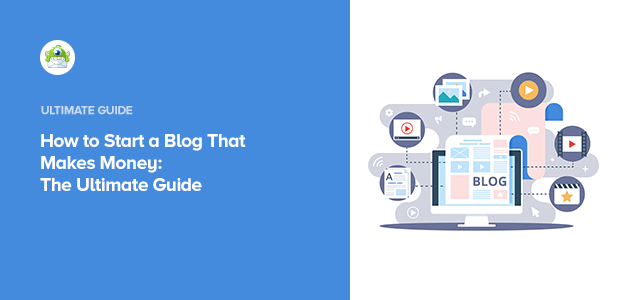
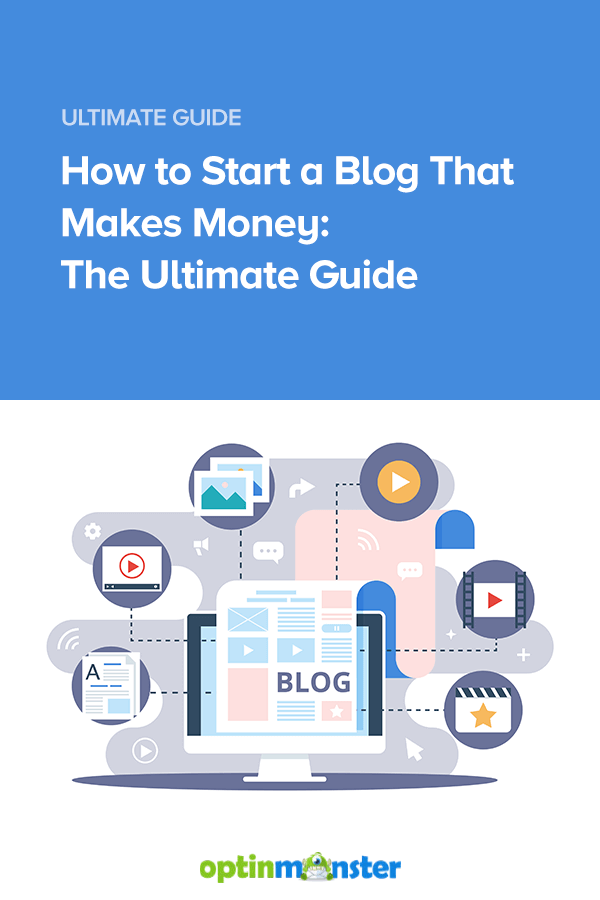
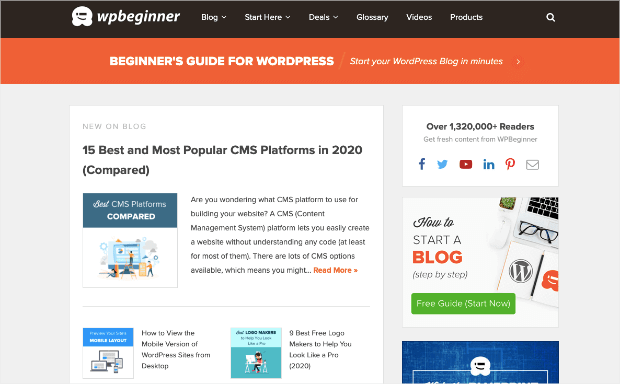



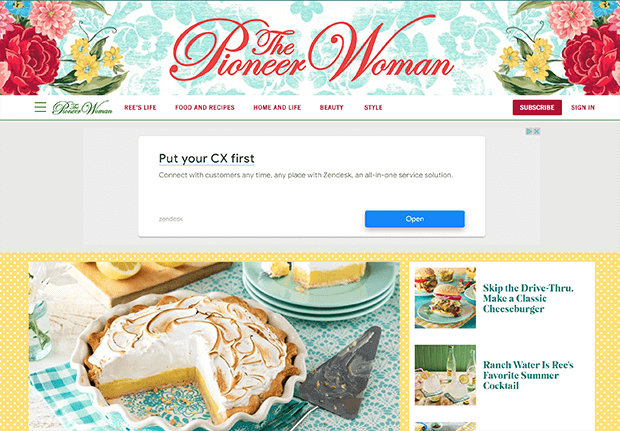
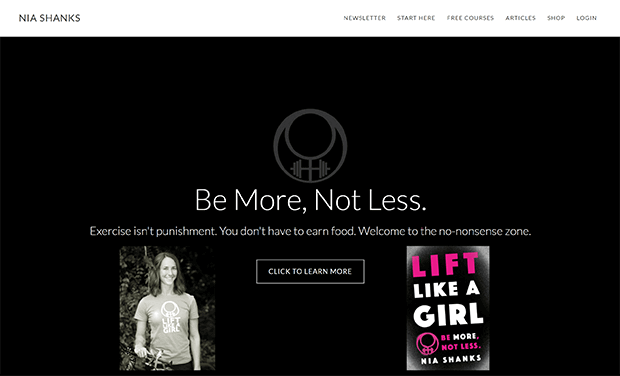

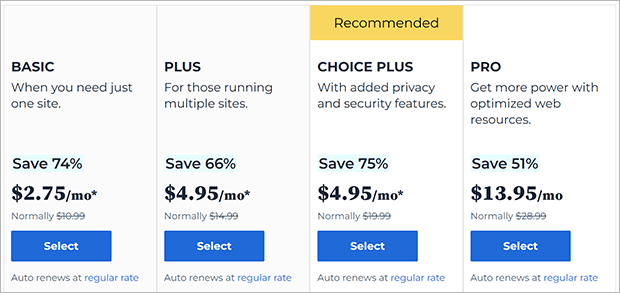

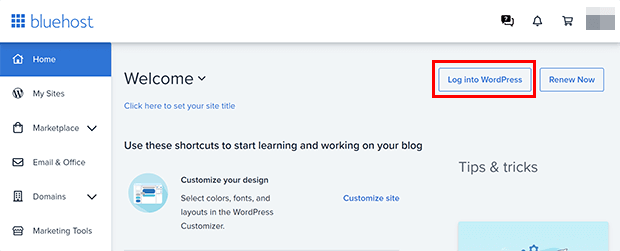
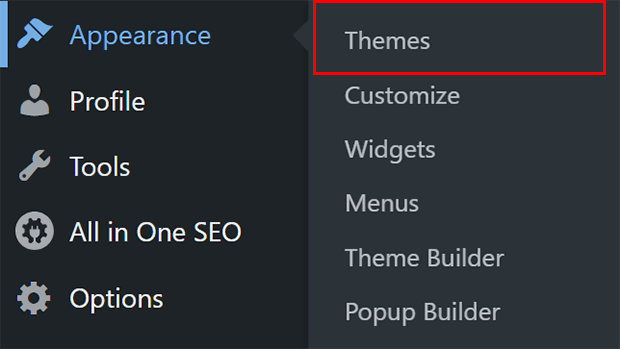
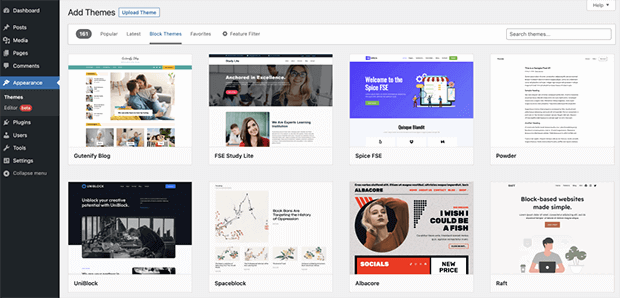

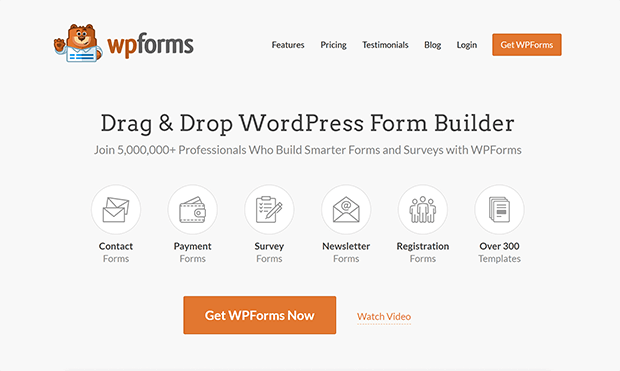
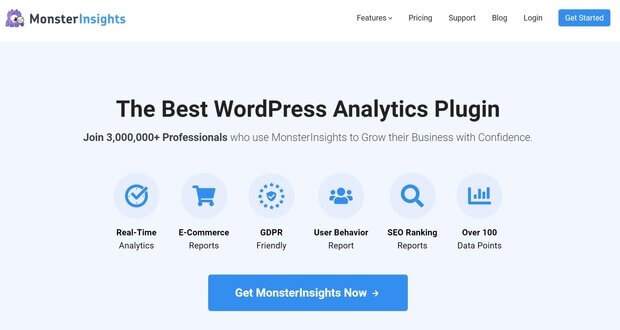




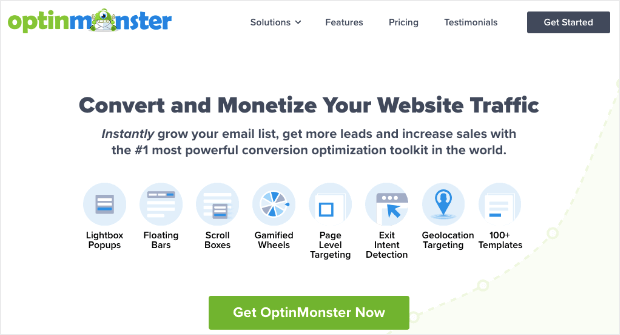
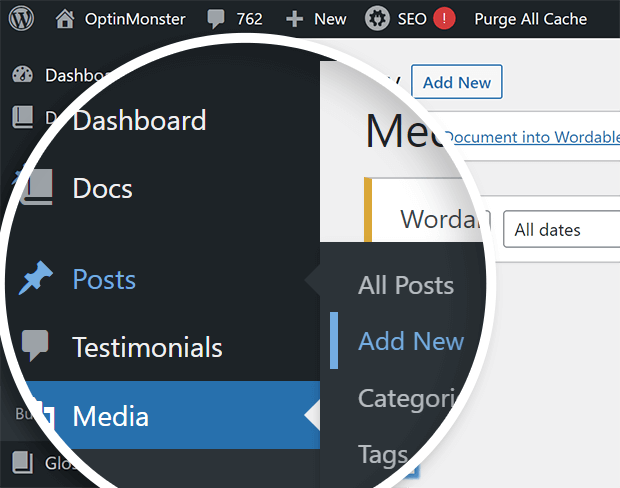
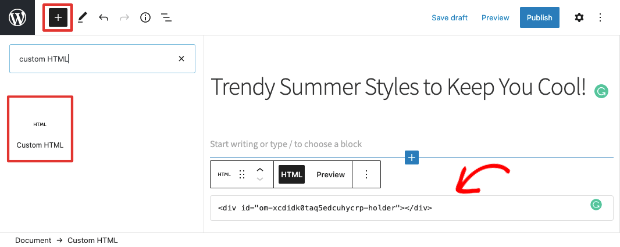
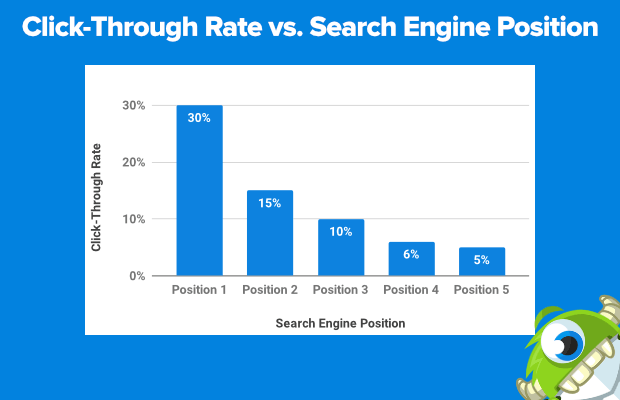





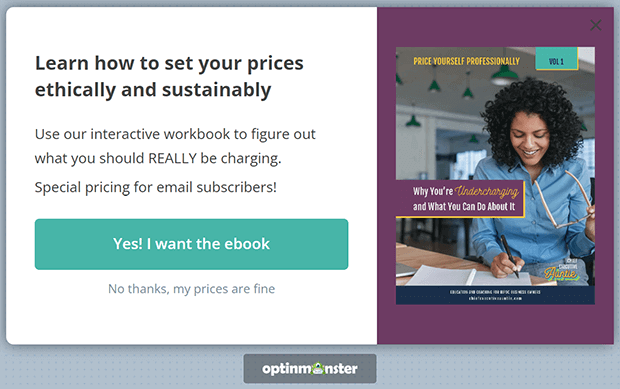

Thanks for reading this article – I hope you found it helpful.
I wanted to let you know about our powerful Exit Intent® technology that converts abandoning website visitors into email subscribers and customers. Typically 70% of the people who visit your website will leave and never return, meaning all those marketing efforts to reach them have gone to waste.
OptinMonster’s Exit Intent® technology detects user behavior and prompts them with a targeted campaign at the precise moment they are about to leave.
You can unlock this powerful technology 100% free when you purchase our OptinMonster Pro plan.
Get started with OptinMonster today and see why 1,000,000+ choose OptinMonster to get more subscribers and customers.
Thomas Griffin
President of OptinMonster
Hi,
This comprehensive guide is a goldmine for aspiring bloggers. It covers everything from niche selection to monetization strategies. A must-read for those looking to turn their passion into profit! Thanks!